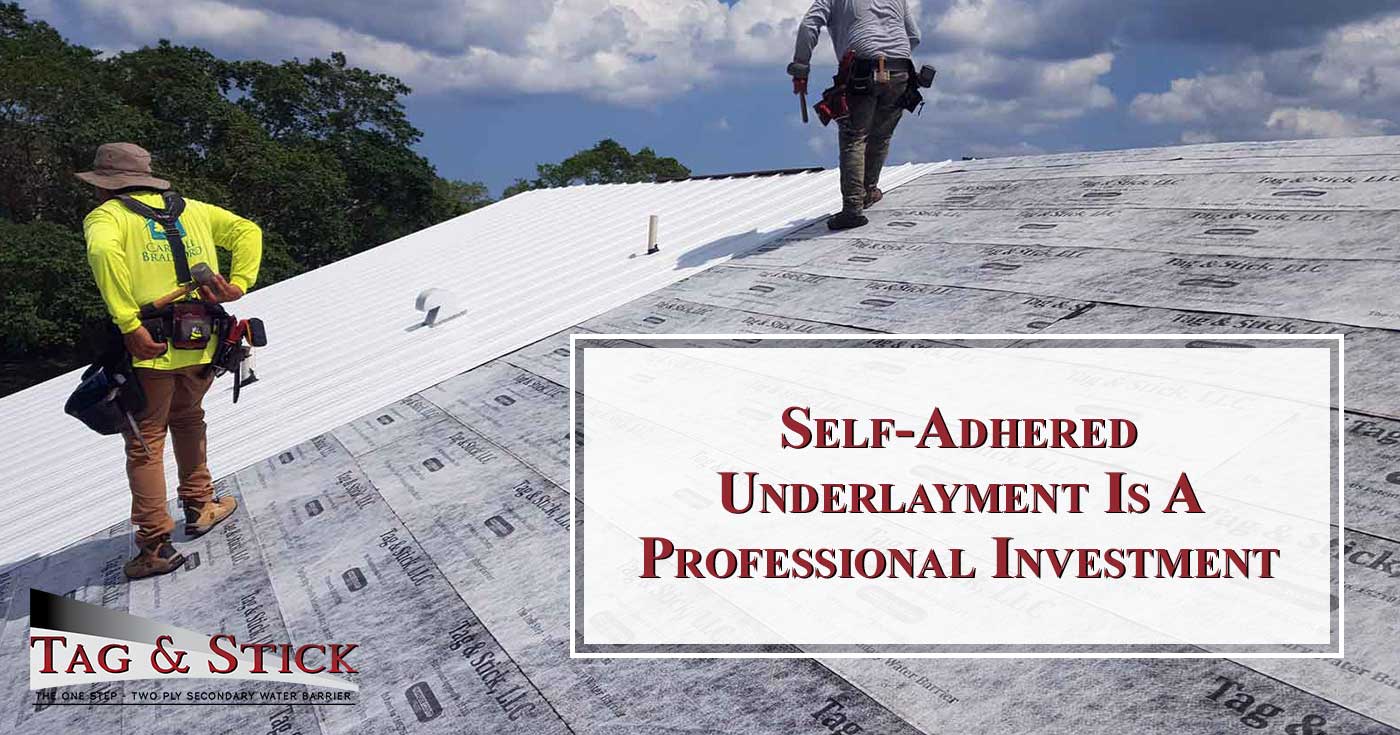Self-Adhered Underlayment Is A Professional Investment
As a roofer and design professional, we understand that you want the best materials available for your clients. Your reputation is dependent on both your craftsmanship and your materials, which is why we recommend using the best underlayment technology out there.
The principals of Tag & Stick have over 25 years’ experience as both a roofing contractors and a roofing product manufacturer combined, and designed Tag & Stick self-adhered underlayment products with Florida roofers and roof design professionals in mind after noticing that the materials on the market where not up performing adequately.
Tag & Stick’s innovative technology solved a problem in the roofing underlayment market, and is now loved by roof contractors around the state. Here’s why you should use Tag & Stick for your business, to save both time and money while also increasing efficiency.
What Is Tag & Stick?
Tag & Stick is a two-ply secondary water barrier underlayment system that combines a proven mechanical attachment with self-adhering technology.
The underlayment has a non-adhesive side that is adapted for direct surface-to-surface contact with the roof deck or sheathing via mechanical attachments such as regular roofing nails, tin tags, cap nails, screws or other specialized mechanical fasteners.
To apply Tag & Stick, one underlayment sheet is mechanically attached to the deck. A second underlayment sheet is then mechanically attached on top of the first. When the sheets are attached, a pressure-sensitive adhesive secures the two together, creating a water-resistant, two-ply barrier.
Technical Specs
The two barriers used in Tag & Stick combined equate to 115 mils in total, with the top layer approximately 60 mils and the bottom layer 55 mils. Overall, Tag & Stick is a thin product.
The product itself is made out of a combination of the following ingredients:
- 30-40% asphalt flux
- 30-50% fiberglass-reinforced, non-woven Polyester
- 8-15% polymers
- 1-3% continuous filament glass fibers
- 1% backing film
- 0-40% calcium carbonate (limestone)
Why Choose Tag & Stick Over Other Underlayments?
There are many reasons why a roofer, architect or construction engineer would, and do, opt for Tag & Stick over other underlayment alternatives, including cost, preventing delamination and safety.
It Meets All Requirements
Although there are many underlayment options on the market at the moment, Tag & Stick is unique in the fact that it is the only product that meets the South Florida Building Code requirements. Tag & Stick is also the only water barrier underlayment system that meets all the requirements stipulated in the Florida Building Code (Dade NOA # 18-0220.13, Florida Product Approval # FL15218-R2).
It Does Not Damage Sheathing
Unlike other underlayment options, Tag & Stick is not applied to your client’s roof directly. Instead, the underlayment is mechanically fastened. This means that, in the future, roofers will be able to remove the roof and underlayment without damaging the sheathing underneath. If an underlayment is applied directly to sheathing it often delaminates when it is time to re-roof, a problem that you won’t have to face with Tag & Stick.
Convenience and Cost
Tag & Stick installation is faster and easier than installing other underlayment solutions. Due to the nature of the product, you will only need to travel to the jobsite once for installation, as opposed to taking two trips. This will save your business time, and time is money.
Safety
Tag & Stick uses mechanical fasteners and adhesive technology, meaning you won’t have to subject your builders to hot tar or torches. No kettle or hot mop requirements means your building site will be significantly safer, as your employees will not have to worry about inhaling health-threatening fumes or working with dangerous materials. Safe workers are happy workers.
At the end of the day, the materials you use are integral to creating a water-tight roof that will stand the test of time, and, more important, will withstand the elements. Choose Tag & Stick as an underlayment for your client’s roofs and it will become your primary option to offer your customers!
